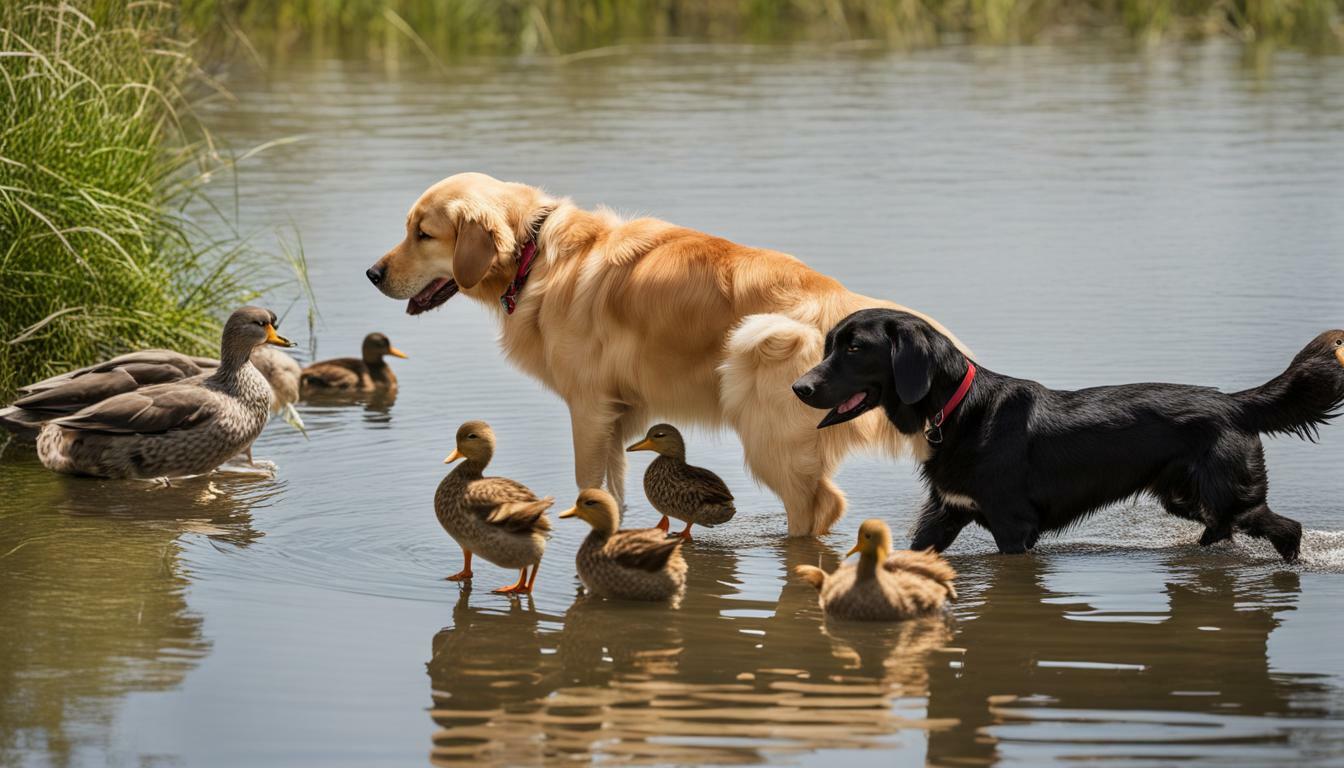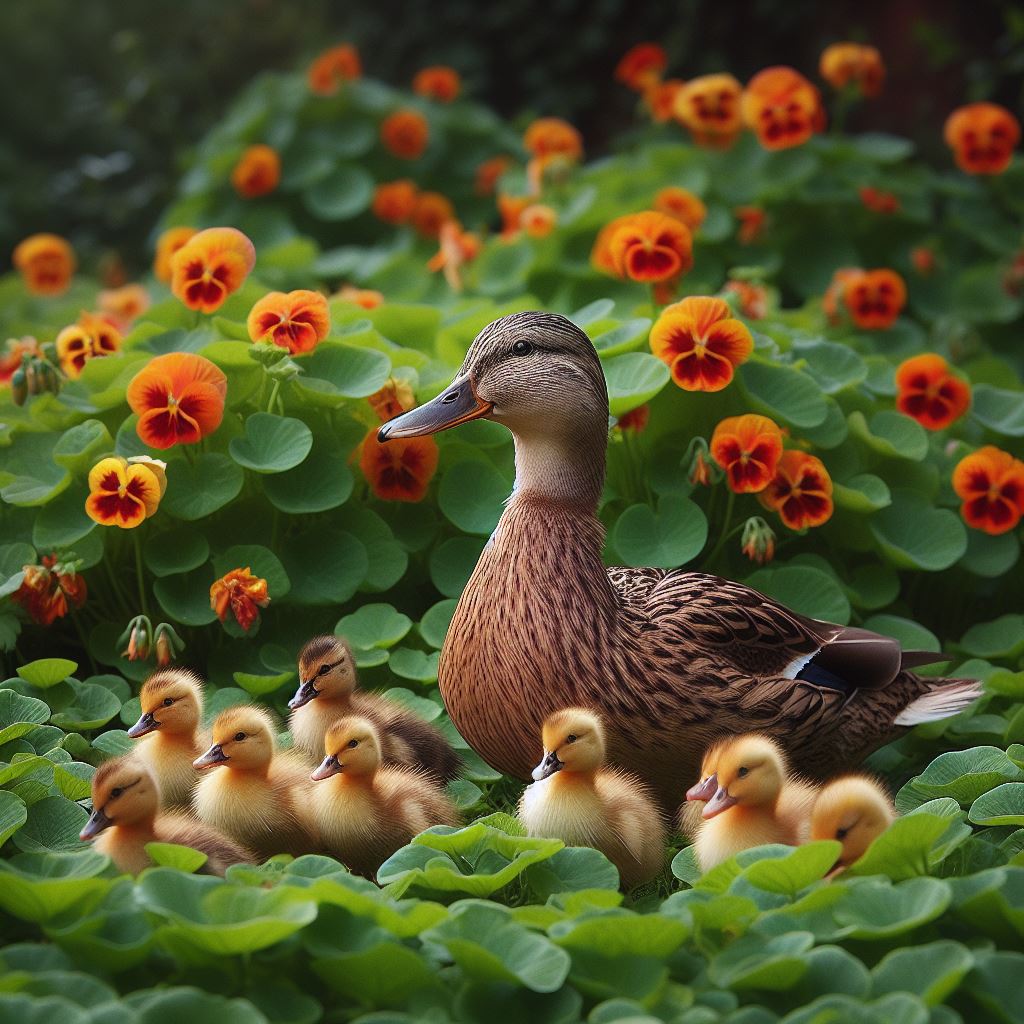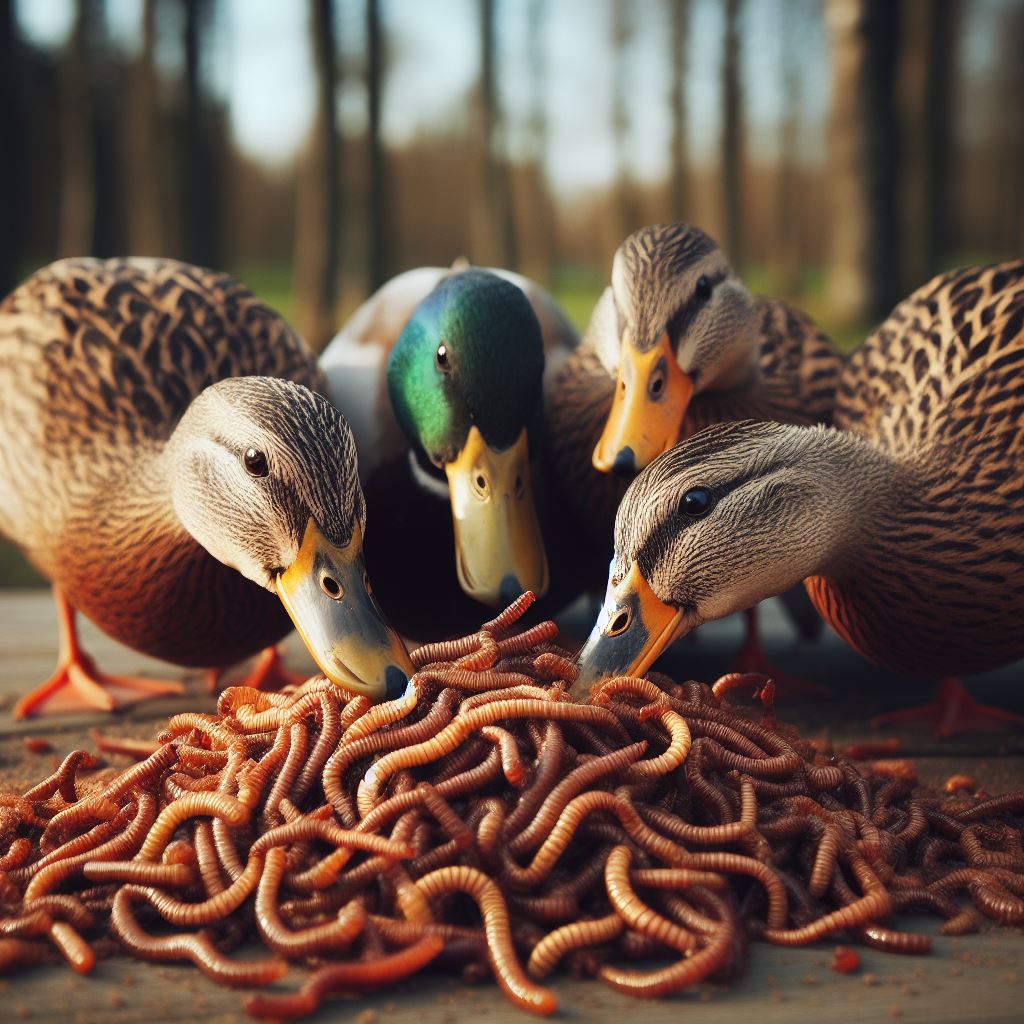Do Dogs And Ducks Get Along? Unveiling The Surprising Truth!

Table of content:
Having both a dog and ducks at home can seem like an idyllic setting. Who wouldn’t love to look out into their backyard and see a faithful golden retriever frolicking in the grass alongside a paddling of happy ducks? However, the reality is that dogs and ducks are very different animals with behaviors and instincts that often put them at odds. While harmonious coexistence is possible with proper precautions, understanding the potential issues is important for any pet owner considering keeping both species.
Why Dogs May Perceive Ducks as Prey
To understand if dogs and ducks get along, it helps to look at the behaviors and motivations of each species. Dogs are natural hunters with strong predatory instincts. Many breeds were specifically developed to flush out and retrieve birds during hunting excursions with their human companions. Chasing and catching ducks fulfills these innate urges.
On the other hand, ducks have a strong flight response to danger and perceived threats. As prey animals, ducks are wired to flee from predators at the first sign of trouble. Unfortunately, this can trigger a dog’s prey drive and lead to chase behavior. Even if the dog doesn’t intend harm, this pursuit causes extreme stress and fear in ducks.
This hunter vs hunted dynamic means that dogs often see ducks as potential targets for chase rather than as companions or cohabitants. Establishing a mutually tolerant relationship requires working against some of their natural tendencies.
Dog Breeds More Prone to Chasing Ducks
While all dogs retain some degree of prey drive from their wolf ancestors, certain breeds are more likely to fixate on ducks and give chase:
- Sporting breeds like retrievers, spaniels, pointers, and setters are purpose-bred to locate and retrieve downed birds. Their strong working drive makes them more apt to go after ducks.
- Scent hounds including beagles and basset hounds use their elite sense of smell to track prey. If they catch a whiff of duck, their nose can lead them straight to the source.
- Herding breeds such as border collies and Australian shepherds have an equally strong herding instinct. Their impulse to gather and control can extend to ducks.
- Terriers live to hunt vermin and other small critters. Feisty terriers may mistake waddling ducks for squirrels or rats worthy of pursuit.
Of course, proper training and socialization can override these genetic inclinations, but owners of these breeds need extra diligence when integrating ducks.
Duck Behavior That Evokes Chasing
Ducks aren’t entirely blameless when it comes to inciting chase behavior from dogs. Wild ducks rely on flight as their primary means of escape. Even domestic ducks retain these strong flight instincts.
Ducks who perceive a threat will take to the air in a rapid vertical takeoff. This quick fleeing motion can trigger a dog’s prey drive. The dog’s natural reaction is to chase after the duck, thinking a game of keep-away has begun.
Ducks may also vocalize loudly if frightened by an approaching dog. Drakes are known for producing coarse warning calls. Ducks quacking and making other noises can further stimulate the dog’s chase reflex.
Finally, splashing water provides irresistible prey cues for many dogs. Ducks who take to the water in an attempt to flee often entice the dog to leap in after them. This continues the chase behavior.
Knowing these duck behaviors allows owners to anticipate and redirect a dog’s natural reaction to give chase. With effort, the dog can learn to peacefully coexist.
Techniques to Establish Peaceful Coexistence
While dogs and ducks face behavioral challenges in establishing tolerance, the two species can live together amiably. It requires introducing them properly, redirecting unwanted behaviors, and providing separate spaces when needed. Some tips to promote harmony include:
Slow Introductions
Letting a loose, excited dog meet free-roaming ducks right off the bat is asking for chasing trouble. Instead, begin introductions slowly on leash and at a distance:
- Allow the dog to observe the ducks from across a fence barrier. Reward calm behavior.
- Walk the leashed dog around the duck enclosure, continuing to reinforce non-reaction.
- Only after the dog reliably ignores the ducks should you attempt closer on-leash encounters.
Create Safe Spaces
Even after successful introductions, the ducks should have a fully fenced area to retreat from the dog. This might be a duck coop and enclosed run. Ducks feel safest when they have escape routes.
Alternatively, the dog could have access to only part of the yard. This allows the ducks to roam securely in a separate zone. Supervise all interactions until you’re confident of peaceful mingling.
Train “Leave It”
Use positive reinforcement to teach a solid “leave it” command. Practice around tempting duck decoys first. Then exercise the command around real ducks at a distance, rewarding when obeyed.
With enough training reps, the dog should learn to look to you rather than chase when the ducks waddle, splash, or quack enticingly. “Leave it” helps override instincts.
Avoid Unnecessary Interactions
Don’t force proximity or let the dog terrorize the ducks needlessly. Let them keep separate company except during structured training sessions. This prevents rehearsal of unwanted chasing behaviors.
Some supervision will likely always be prudent since you can’t entirely suppress the dog’s natural instincts. Better to set them both up for success.
Provide Ample Exercise
Ensure the dog receives sufficient exercise every day through walks, runs, fetch, and interactive play. A tired dog is less apt to hassle the ducks out of boredom or pent-up energy. Meeting the dog’s needs makes coexistence easier for all.
With patience and care, even breeds bred to flush fowl can adapt to leaving ducks in peace. But owners should always watch for signs of regression, separating the animals immediately if chasing occurs.
Signs of Stress in Ducks Triggered by Dogs
Dog owners should watch duck body language carefully for any signs of fear, anxiety, or stress displayed in the dog’s presence. Stressed ducks will not acclimate and may have to be rehomed if terrorized.
Behaviors that indicate the ducks feel threatened include:
- Frequent startle responses – sudden movements or taking flight when approached
- Aggressive displays from drakes like hissing, head-bobbing, or charging
- Cowering, crouching, or attempting to hide from the dog
- Rapid panting that continues after the perceived threat retreats
- Wings held slightly away from the body in a sign of wariness
- Changes in vocalizations – increased quacking, especially by males
- Avoidance of areas the dog frequents
- Reduced eating and drinking due to apprehension
- Fewer eggs laid by stressed female ducks
Ongoing displays of this body language in the dog’s presence necessitate separation to avoid terrorizing the ducks. Some ducks never acclimate to canine company.
While their natural instincts place them at cross purposes, dogs and ducks can successfully coexist in the same household. It requires introducing them cautiously, providing secure spaces for the ducks, rewarding non-reaction from the dog, and supervising all interactions. Extra vigilance is required with sporting, hound, herding and terrier breeds prone to high prey drive. Watch also for signs of prolonged stress in the ducks, which indicates incompatibility with the dog. Achieving safe harmony is possible with the right dog, training, and duck temperament, enabling both species to live in happy companionship.
Final Thoughts
Raising dogs and ducks together takes patience, preparation and understanding of both species’ behaviors. While harmonious coexistence is achievable, owners must invest time into proper training and management to prevent stress or harm to either animal. Consider whether your dog’s temperament and breed traits suit them for feathered companions. Well-socialized dogs with trained impulse control can learn to get along with ducks swimmingly. But chasing instincts run deep, so never let down your guard. Ultimately, what matters most is promoting the welfare of all members of a multi-species household.
Welcome. I’m Adreena Shanum, the proud owner of this website, and I am incredibly passionate about animals, especially poultry. I founded adreenapets.com as a labor of love, stemming from my desire to share my knowledge and experiences with poultry enthusiasts worldwide.




